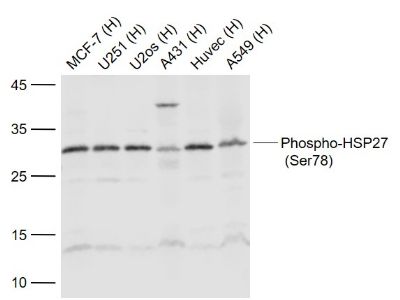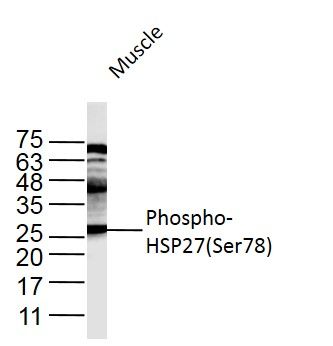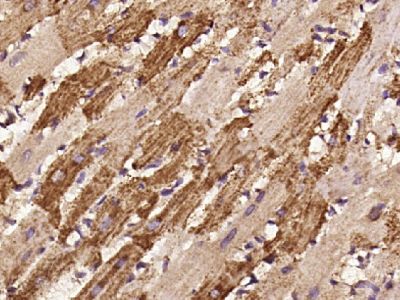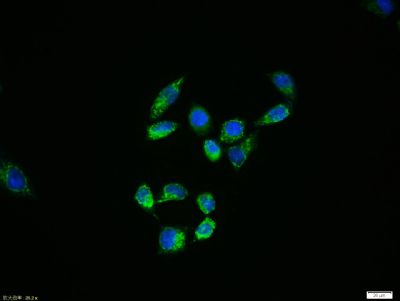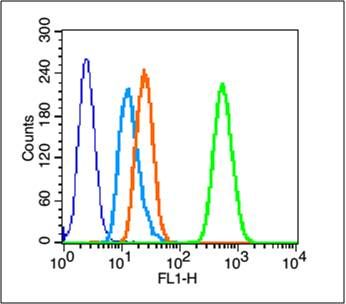Sample:
Lane 1: MCF-7 (Human) Cell Lysate at 30 ug
Lane 2: U251 (Human) Cell Lysate at 30 ug
Lane 3: U2os (Human) Cell Lysate at 30 ug
Lane 4: A431 (Human) Cell Lysate at 30 ug
Lane 5: Huvec (Human) Cell Lysate at 30 ug
Lane 6: A549 (Human) Cell Lysate at 30 ug
Primary: Anti-Phospho-HSP27 (Ser78) (SL3179R) at 1/1000 dilution
Secondary: IRDye800CW Goat Anti-Rabbit IgG at 1/20000 dilution
Predicted band size: 27 kD
Observed band size: 27 kD
Sample:
Muscle (Mouse) Lysate at 40 ug
Primary: Anti-Phospho-HSP27(Ser78) (SL3179R) at 1/300 dilution
Secondary: IRDye800CW Goat Anti-Rabbit IgG at 1/20000 dilution
Predicted band size: 23 kD
Observed band size: 23 kD
Paraformaldehyde-fixed, paraffin embedded (Rat heart); Antigen retrieval by boiling in sodium citrate buffer (pH6.0) for 15min; Block endogenous peroxidase by 3% hydrogen peroxide for 20 minutes; Blocking buffer (normal goat serum) at 37°C for 30min; Antibody incubation with (Phospho-HSP27(Ser78)) Polyclonal Antibody, Unconjugated (SL3179R) at 1:400 overnight at 4°C, followed by operating according to SP Kit(Rabbit) (sp-0023) instructionsand DAB staining.
Hela cell; 4% Paraformaldehyde-fixed; Triton X-100 at room temperature for 20 min; Blocking buffer (normal goat serum, SLC0005) at 37°C for 20 min; Antibody incubation with (Phospho-HSP27 (Ser78)) polyclonal Antibody, Unconjugated (SL3179R) 1:100, 90 minutes at 37°C; followed by a conjugated Goat Anti-Rabbit IgG antibody at 37°C for 90 minutes, DAPI (blue, C02-04002) was used to stain the cell nuclei.
Blank control (blue line): A431 cells(fixed with 70% methanol (Overnight at 4℃) and then permeabilized with 90% ice-cold methanol for 20 min at -20℃).
Primary Antibody (green line): Rabbit Anti-Phospho-HSP27(Ser78) antibody (SL3179R);
Dilution: 0.2μg /10^6 cells;
Isotype Control Antibody (orange line): Rabbit IgG .
Secondary Antibody (white blue line): Goat anti-rabbit IgG-FITC;
Dilution: 1μg /test.
|
